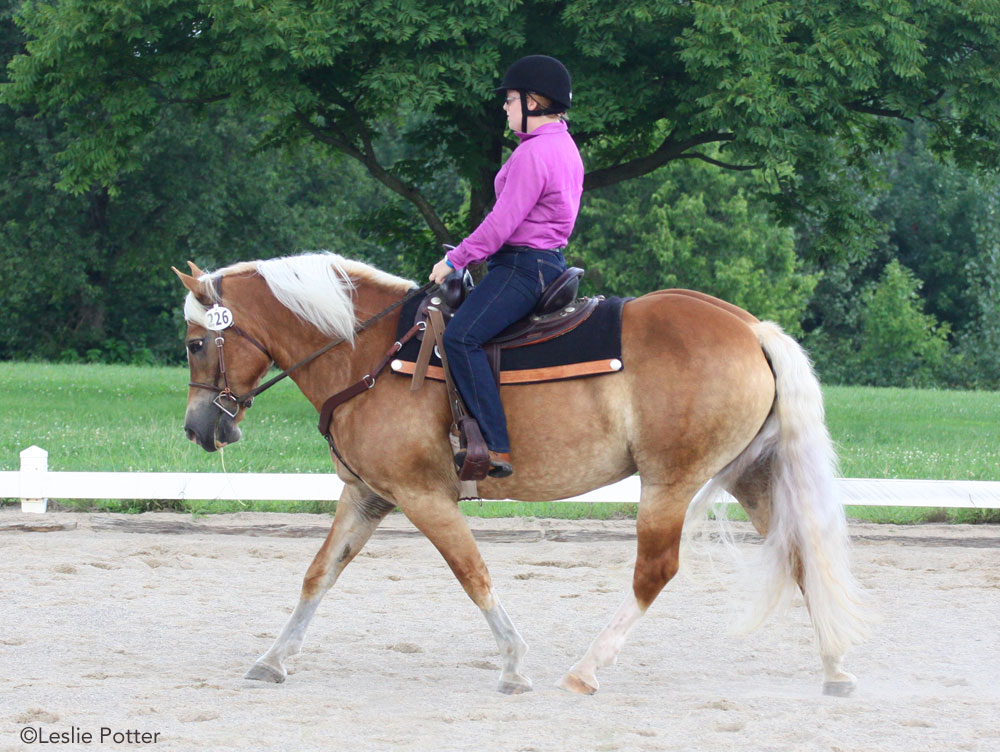If you’re a western rider, you probably sit when your horse trots (unless your horse is long-trotting, when you may stand in your stirrups for comfort). But while posting at the trot is unacceptable in the show pen in most classes, rising and sitting while your horse trots is a comfortable move for both of you. So when should you post, and when should you sit? Darla Walker-Ryder explains.
- Posting can be useful when long-trotting to build a horse’s condition or for novice riders still working on balance
- Instructor Darla Walker-Ryder explains how to correctly post the jog or trot.
- When to sit the trot or jog, and how to do it to keep your horse and yourself comfortable.
How to Post
“It’s not an up-and-down movement, it’s forward and back [in the saddle], kind of like brushing the saddle or polishing the seat,” says Walker-Ryder. “Sometimes I give my younger students the visual of a slinky attached to your navel. The saddle horn pulls your tummy up toward the horn and back down. Your shoulders don’t actually go up and down—they remain still. It’s just the seat and core that moves forward and back.”

You may need to use your legs to squeeze when you come forward to keep the horse from slowing down and to maintain rhythm and impulsion in the trot. If you overdo it, however, you could find your horse breaking into a lope. Experiment with how much leg pressure your horse needs to maintain impulsion without breaking gait.
When to Post
If your horse has a rough trot, you may find posting a much more enjoyable way to experience that gait instead of being jostled about. Walker-Ryder says if you’re going to condition your horse, an extended trot is the way to go.
Many riders think loping is necessary to leg up their horse, but in reality, Walker-Ryder says the two-beat trot is the best way to build up muscle on a horse. Posting is ideal for long-trotting, allowing your horse to trot for a longer period much more comfortably for both you and your horse, without making the horse back-sore.
Sitting a long-strided trot well is a challenge even for the pros, according to Walker-Ryder. If you let your horse really stretch out, you’re going to bounce, causing him to hollow his back and develop a sour attitude.

Even if your horse is smooth as glass, she says posting at the long trot encourages your horse to move more freely.
“I have a horse with some Missouri Fox Trotter in his blood, so I can easily sit his trot, but I prefer—even on him—to post, simply because I feel it allows him to really stretch his head down and lift his back up better,” says Walker-Ryder.
It’s also a good idea to learn to post if you’re a novice rider and haven’t quite managed to sit a horse’s trot without flopping.
A tightened core in the saddle takes time to master, so while you’re learning, Walker-Ryder recommends posting.
When to Sit
Once you’ve mastered how to keep your horse at a slower, more controlled trot, Walker-Ryder says you’re ready to work on sitting that gait.
“You’ve really got to learn how to stretch your legs down and drop your heels,” she says. “Relax your lower back and allow your core to act like a spring. Sitting the trot is an art in itself.”
When you’re competing in judged western events such as western pleasure, horsemanship, trail and western riding, check the rulebook—some classes may not accept posting, so you’ll need to master sitting the trot if you plan to compete in these classes. Western dressage and ranch riding classes are some exceptions where posting is permitted.
Meet the Expert
Darla Walker-Ryder has been teaching riding students for more than 50 years. In 1995, she became certified with the Certified Horsemanship Association, and became a clinician and a master-level instructor in both western and English disciplines. In the last 24 years, she has certified close to 1,500 riding instructors. Darla is located in Aledo, Texas, and enjoys participating in western dressage and cowboy dressage.
This article originally appeared in the March 2019 issue of Horse Illustrated magazine. Click here to subscribe!





